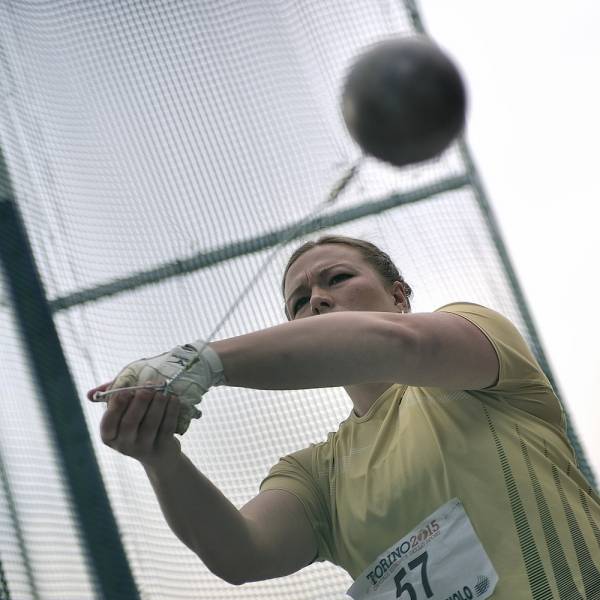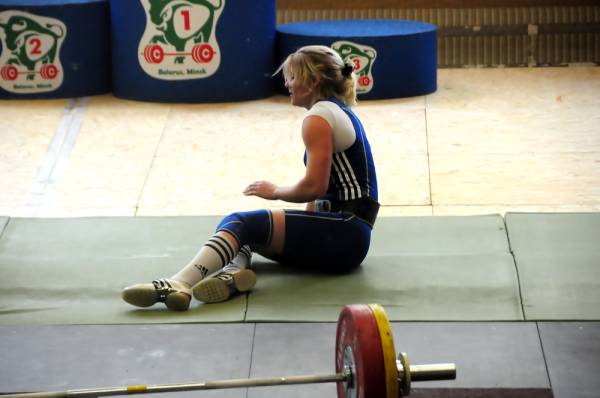I’ve been a competitive athlete for a good chunk of my life and much of what I’ve learned about success has come more from my failures than my wins as a collegiate track and field hammer thrower and currently as a weightlifter. When you get down to it, all I’m trying to do is perfect throwing a heavy metal ball attached to a wire and picking heavy things up and putting them down. Often, gravity gets the better of me. Perhaps you can relate?
While on the surface there’s not much to either one of these activities, they have both provided much insight into my greatest strengths and weaknesses as an athlete, and more so, as a person. Here are the seven biggest lessons I’ve learned:
Lesson #1: Take every rep as if it were your last.
It’s hard to trick yourself into believing each rep is your very last, as you’ll take over thousands of reps in your career, but in order to make progress you have to attack each rep with the right amount of focus and attention. Whether there is 35 kilos or 105 kilos on the barbell, don’t take any rep for granted and perfect each as if it were the last.
Lesson #2: Everything is closer than you think.
Just because it seems you are not making progress doesn’t mean you are not getting better. I’ve been through six-month to one-year stretches where every workout on paper has the exact same weight and rep scheme, which would often make me question if I was actually improving. What I did find is that in competition I was more consistent in hitting similar weights – weights I was not consistent in hitting six months earlier, even if I only added a kilo or two more. Consistency gives me greater confidence that I am closer to hitting a personal record. Focus on being solid and consistent. It will lead to bigger gains down the road.
Lesson #3: Don’t chase success.
 Viktor Frankl said, “Don’t aim at success. The more you aim at it and make it a target, the more you are going to miss it.” Being an athlete has taught me the value of patience. It’s so easy to fixate on the end goal that we end up neglecting to put all our energy into each task we are currently doing. We look at the forest, but we can’t see the twigs on the ground in front of us. Goals are important and necessary, but treat them more like guidelines. If I have a certain total I would like to hit at a competition, I find it harder to hit if I only concentrate on the end result and not the steps involved in producing the desired total. To get from Point A to Point G, you have to go through Points B through F first. Forget about success. It will come when you least expect it.
Viktor Frankl said, “Don’t aim at success. The more you aim at it and make it a target, the more you are going to miss it.” Being an athlete has taught me the value of patience. It’s so easy to fixate on the end goal that we end up neglecting to put all our energy into each task we are currently doing. We look at the forest, but we can’t see the twigs on the ground in front of us. Goals are important and necessary, but treat them more like guidelines. If I have a certain total I would like to hit at a competition, I find it harder to hit if I only concentrate on the end result and not the steps involved in producing the desired total. To get from Point A to Point G, you have to go through Points B through F first. Forget about success. It will come when you least expect it.
Lesson #4: Surround yourself with the right people.
Finding the right people to steer you in the direction is half the battle to achieving success. In order to reach my goal of becoming an elite weightlifter, I had to find the right doctor and the right coach. Once I pinpointed the root cause of my unsolved health concerns, I was able to take the steps to correct an underactive thyroid and adopt a gluten-free diet. Finding the right coach to teach me proper technique and to design a training program was equally important in helping me reach my goals. Taking these steps has allowed me to optimally perform as an athlete.
Lesson #5: Maximize the moment.
Many of the day-to-day tasks we do serve the purpose of bringing us one step closer to achieving our goals. I eat a diet comprised of fresh, whole foods, and I spend two hours a day going through a series of exercises, sets, and reps in an effort to hit personal records in the snatch and the clean and jerk. The truth is, we spend many hours doing monotonous tasks to put us in a better position for success. It is often hard to take advantage of those moments when it counts. The moments when I’m about to take a personal record attempt in training or in a competition are those I prepare for. Make it count. You never know when those opportunities will come again.
Lesson #6: Failure is an inevitable part of the process.
 Teddy Roosevelt said, “It is hard to fail, but it is worse never to have tried to succeed.” No one wants to fail, except that’s the tradeoff for trying to be a success. As humans, we’re constantly trying to close the gap between what we are and what we can be. That gap is our potential. It compels us to work toward what we think we are capable of achieving. As long as we strive to merge the rift between what we are and what we can be, there is much we can learn and gain from failing. The lessons we learn from our failures are invaluable to our future successes and allow us to grow.
Teddy Roosevelt said, “It is hard to fail, but it is worse never to have tried to succeed.” No one wants to fail, except that’s the tradeoff for trying to be a success. As humans, we’re constantly trying to close the gap between what we are and what we can be. That gap is our potential. It compels us to work toward what we think we are capable of achieving. As long as we strive to merge the rift between what we are and what we can be, there is much we can learn and gain from failing. The lessons we learn from our failures are invaluable to our future successes and allow us to grow.
Lesson #7: Cultivate and nurture relationships with your competitors.
The journey is long and tough if you don’t have friends to help you along the way. The times I have trained by myself and didn’t seek out the camaraderie of fellow athletes only made me more pessimistic about what I had accomplished and what I was trying to achieve. While your toughest competitors may be your fiercest rivals, you all have a lot in common. At the elite level, you are equally talented, driven, dedicated, and passionate about the same pursuit – otherwise none of you would be there. Your competitors can learn just as much from you as you can from them. Use it to your advantage. You can make them better and they can make you better, too.
The stripped down nature of training and competition has revealed and tested my greatest strengths and flaws as a human being. The barbell and the hammer wire do not lie. Our fears and frustrations lie in these inanimate objects. We invest blood, sweat, tears, and every muscle fiber into our sport to achieve personal records. But that isn’t what ultimately defines us. It’s the friendships formed and cultivated because of a shared mutual interest in perfecting a craft. These relationships sustain our motivation and belief in our abilities and allow us to appreciate the person we have become as a result of the journey.
Photos courtesy of Shutterstock.






